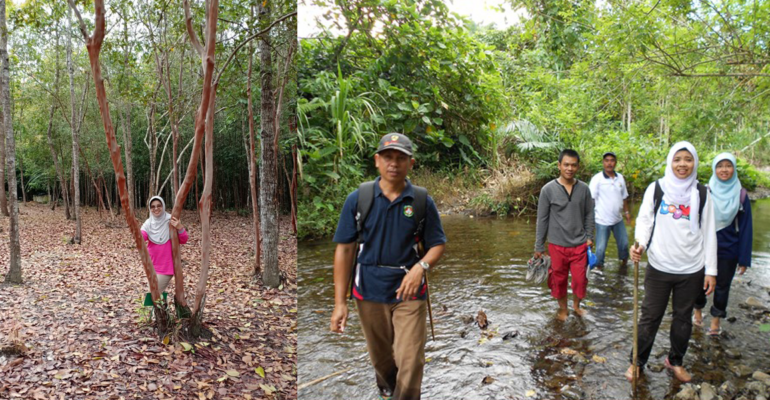IPB University professor utilises cutting-edge methods in ecophysiology to find potential crops

IPB University Professor Prof Triadiati utilises cutting-edge methods in the field of ecophysiology to find potential plant candidates. Plant ecophysiology is a science that studies physiological mechanisms that describe the interaction between plants and plant communities with their physical, chemical and biological environments.
“The existence of these interactions will cause plants to make physiological adjustments to certain environmental factors and components in order to survive in that environment,” said Prof Triadiati, IPB University Plant Science expert during the Pre Scientific Oration Press Conference of Professor, 14/12 which was held online.
Thus, she said, every plant that lives in a different habitat will have a different physiological mechanism, even though it is the same species. This difference in physiological response can be used as a characteristic to obtain potential plants through a selection process based on certain desired criteria.
“The criteria for potential plants in this discussion are limited to the ability of plants to grow in certain environments that also produce metabolites as markers that can be utilised by humans,” he said.
The latest technologies used include bioimaging and omics. Prof Triadiati explained that bioimaging has been applied to plant ecophysiology research in various aspects. These aspects include determining the ability to live and grow plants and crops in different water availability.
The IPB University lecturer explained that the application of bioimaging methods in plant ecophysiology can be done to determine the value of hydraulic conductivity (Kh) of xylem vessels. This method can be used to know and determine the ability of plants to water availability.
“The research on determining the Kh value using the bioimaging method that we have conducted includes obtaining plant species that are suitable for peatlands with water-saturated soil. In addition, data was obtained that oil palm and rubber trees, which are plantation crops, have different abilities when in water-saturated soil,” said Prof Triadiati, IPB University lecturer from the Faculty of Mathematics and Natural Sciences.
Besides bioimaging, she said, another method that has been applied to plant ecophysiology is ‘omics’, especially metabolomics. This method is used to select and determine potential plants based on metabolite markers. If this method is used, potential plants that can produce metabolites that are beneficial for humans will be obtained. Therefore, ecophysiology in the ‘omics’ era is called ecophysiolomics.
“Some of the research results related to ecophysiolomics that we have done are obtained accessions of vetiver, kencur, murbey that are resistant to environmental stress while producing metabolites that can be used by humans,” said Prof Triadiati.
She emphasised that by applying bioimaging and ‘omics’ methods to plant ecophysiology, efforts to obtain potential plants with certain physiological characters become faster. By applying these two methods, we have obtained potential plants with the desired characters. (IAAS/RUM)



